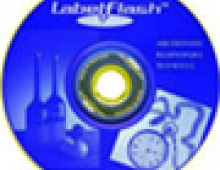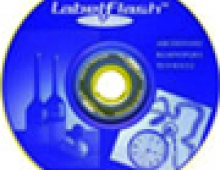Labelflash Technology
1. Introduction
 Labelflash
technology was recently introduced by Yamaha Corporation and Fuji Photo Film
Co. This technology promotes the ability to burn images directly onto a
specialised dye layer on the disc label side, with the same laser used for data recording.
This technology allows consumers to personalise and customise their DVDs with
photos, text and graphics, replacing traditional sticker and marker labeling.
Labelflash
technology was recently introduced by Yamaha Corporation and Fuji Photo Film
Co. This technology promotes the ability to burn images directly onto a
specialised dye layer on the disc label side, with the same laser used for data recording.
This technology allows consumers to personalise and customise their DVDs with
photos, text and graphics, replacing traditional sticker and marker labeling.
Labelflash technology allows a consumer to burn pictures and/or write titles
on the label side of the DVD discs, specially developed for the Labelflash system
with DVD writers with the Labelflash function. There is no need for printers and
consumables for printing. To obtain high resolution and high contrast pictures
in blue and silver colour, a consumer only needs to turn the disc upside down
and insert it into the drive again, after burning the data. The technology burns
the image 0.6mm deep into the media in as little as five minutes, creating
a more stable and permanent image than traditional printable media that uses
the
top layer of a disc for labeling.
| General Specifications of Labelflash System | |
| Laser wave length | 655nm |
| NA | 0.65 |
| Picture-burning time | 5min (Fast mode) - 20min (High Quality mode) |
| General Specifications of Labelflash Disc | |
| Depth of the picture-burning layer | 0.6mm from the disc surface |
| Dye for the picture-burning layer | Organic Dye |
| Picture-burning area (radius) | 25mm - 58mm |
A look at the past
The technology marries the unique Yamaha DiscT@2 ("Tattoo") technology for picture burning on the data side with the photochemical expertise of Fuji Photo Film, which is a leading company in technologies for optical media.
Back in 2002, YAMAHA had developed the DiscT@2 technology, allowing laser printing on a CD. It was a technology on which Labelflash is based. In that case however, users had to sacrifice some of their data space on the CD, since printing took place on the data side of the disc and usually on the outer region of the CD. In other words, the DiscT@2 labels were "burned" on the same side as the data, and not on the top side (label side) of the disc.

Following on the DiscT@2 concept, LabelFlash is quite straightforward to use. The image (label) consists of grayscale information with x-y coordinate values. The LabelFlash-capable application converts the x-y coordinate information to polar coordinate information. The application then sends the data with polar coordinates to the LabelFlash drive, which in our case is the NEC ND-4551A.
LabelFlash printing can be theoretically done on any DVD-/+R media, by simply placing the disc right side up in the tray and printing the label on the data side as was done with DiscT@2. Of course, that would require that the burner's firmware support printing on non-LabelFlash discs. In our tests, we used the NEC ND-4551A with firmware v1.07 installed and the drive managed to print on DVD-R and DVD+R media, but not on CD-R media (not supported).
How it works
Usually, a burning application will supply a DVD recorder with raw digital data, to which the recorder's hardware adds header and error correction information and then converts it to the so-called eight to sixteen (EFM+) modulated patterns. These are the little chunks of data that get written to the disc.
The modulated patterns for DVD writing vary from a minimum value to a maximum value. A combination of these patterns, is used for writing to DVD-R and DVD+R. The result is that the burned area looks darker than the unused area. LabelFlash takes things further and breaks free from the limitations imposed by normal modulated patterns. This allows for more flexibility in how the laser burns onto DVD recordable media, making the formation of visible images possible.


















